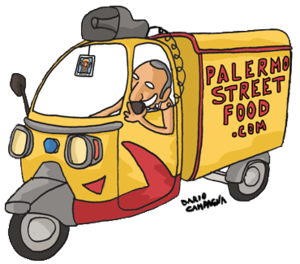Pani ca' Meusa, the epic spleen sandwich of Palermo! Around the year 1000 there was a large Jewish community in Palermo and many Jewish people worked as butchers. They traded their butchering skills for parts of the animals they butchered. Much of the meat they kept was organs and offal of cow.
How did they prepare the cow innards? They boiled them and served them with lemon and salt. This was an original street food in Palermo.
Around the same time, the Arab population of Palermo used to make a sandwich with ricotta and caciocavallo cheese. This was also an original street food in Palermo.
At some point, these two dishes became very common in all of Palermo.
Centuries later, during the Spanish Inquisition, the Jewish people were tragically forced to leave The Kingdom of Sicily, Remember, during that time Sicily was ruled by Spain.
Over time, the people who continued to populate the island of Sicily, started to develop their own Sicilian identity. According to the legend, at this point in history, in Palermo the two street food traditions were combined into the spleen sandwich closer to what we know today.
Today, the meat for this sandwich is boiled and then fried in pig lard. The tradition of frying in lard was created to heat up the meat and it began because it gave the meat a soft texture. This softness meant that even people without all their teeth could eat it.
Today on the streets of Palermo, we often eat our Pani ca' Meusa Maritata style. To make this street food delicacy, cow spleen, lung, and trachea are boiled. Then, right before the moment of eating, they are fried in pig lard, put on a bun, and sprinkled with ricotta and caciocavallo.
Maritata means marriage. The idea is that the white cheese represents the bride and the dark colored meat represents the groom.
And there you have it!

